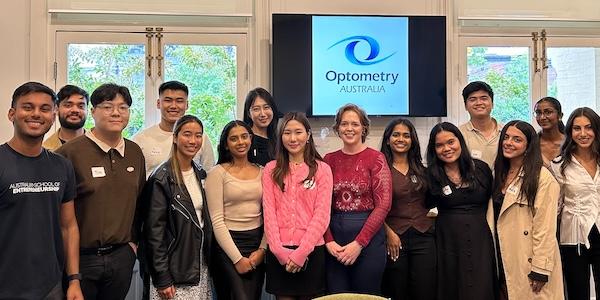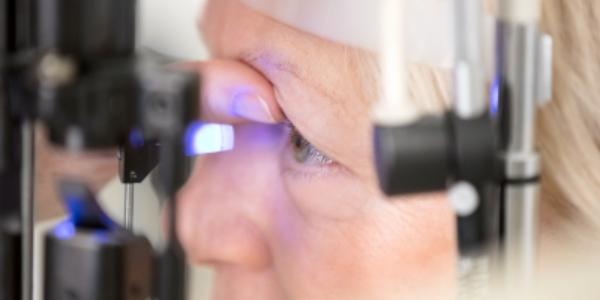The following information provides an overview of ventilation in the context of an Australian Optometry Practice during the COVID-19 pandemic. Optometry Australia recommends that Australian optometrists review the following information carefully.
The key takeaway is following good hand hygiene as much as possible, triaging patients before they enter the practice, and open windows where practical to improve airflow. To support members, Optometry Australia has provided further information on both infection control and triaging patients for urgent and critical care.
On Wednesday the 30th of September in the ‘Infection control webinar for Allied Health‘ hosted by the DHHS Infection Prevention and Control Cell on Wednesday evening ventilation and small consulting rooms was discussed and it was suggested;
‘The 4m2 rule is a guide – unfortunately at times it is not possible to adhere to. Is there another room that can be used in that instance? If not, then both wear masks – It would mean that you would both be considered a close contact in the event of a positive case, and risk of transmission is higher. An N95 mask may help in that instance and full PPE if room cannot be changed.’
Advice provided around the world
In light of further understanding and announcement from the Centers for Disease Control and Prevention (CDC) and the European Center for Disease Control and Prevention (ECDC) on COVID-19, transmission by aerosols is responsible for some of COVID-19 transmission, and poorly ventilated spaces where people are not wearing masks is particularly risky.
Whilst not a peer-reviewed journal, El Pais has released an article “A room, a bar and a classroom: how the coronavirus is spread through the air” with some interesting graphics explaining how this spread occurs and how masks, ventilation, and activity risk level impacts the spread and how these variables explain some “super spreader” events seen around the globe. For more information on how you can improve ventilation and potentially reduce the risk of contagion in your indoor practice see further down.
The Centers for Disease Control and Prevention (CDC) in the United States updated their guidance as of July 9, 2020 to recommend isolating symptomatic patients as soon as possible. Set up separate, well-ventilated triage areas, place patients with suspected or confirmed COVID-19 in private rooms with door closed and private bathroom (as possible), prioritize AIIRs for patients undergoing aerosol-generating procedures.
They suggest healthcare facilities explore options to improve indoor air quality in all shared spaces such as;
“Optimise air-handling systems (ensuring appropriate directionality, filtration, exchange rate, proper installation and up to date maintenance)”
“Consider the addition of portable solutions (e.g. portable HEPA filtration units) to augment air quality in areas when permanent air-handling systems are not a feasible option.”
The World Health Organization released an updated scientific brief on 09 July 2020 discussing the newly accepted modes of transmission for SARS-CoV-2. They have reclarified modes of transmission that occur with COVID-19.
- Contact and droplet transmission: occurs during close contact with infected people through respiratory secretions and saliva, occurring when people cough, sneeze, talk or sing. Refers to droplets >5-10um in diameter. Occur when contact is close, within one metre, and these droplets can reach the mouth, nose or eyes.
- Airborne transmission: dissemination of droplet nuclei (aerosols) <5um in diameter, that can remain infectious when suspended in air, over both long distances and time. There are theories that respiratory droplets can in turn generate microscopic aerosols, but so can normal talking and breathing. This has been proven for other similar SARS viruses, but not yet for COVID-19. Case studies have been presented when transmission seems to have occurred in indoor, poorly ventilated areas such as fitness classes, choirs and restaurants. Experimental studies in laboratory conditions suggested RNA can be present for three hours, however studies conducted in health care settings have been inconclusive.
- Fomite transmission: when droplets contaminate surfaces and objects, which are then referred to as “formites” (contaminated surfaces). COVID-19 RNA has been detected on surfaces for periods ranging from hours to days depending on the environment. They have concluded that transmission can then occur through touching formites and then touching the mouth, nose or eyes.
- Other routes: COVID-19 has also been detected in urine and faeces, despite no published reports of transmission through these routes.
They have also updated accepted understanding of when infected people infect others
- Symptomatic patients: can infect through droplets and close contacts
- Asymptomatic patients: incredibly varied data on how many patients are infectious but never develop symptoms, with reports suggesting 23%.
- Pre-symptomatic patients: a study from Singapore suggested that 6.4% of secondary cases are caused by pre-symptomatic transmission, with others suggesting up to 44%.
Some studies, such as the one by Jingyuan Wang, Ke Tang, Kai Feng and Weifeng L “High Temperature and High Humidity Reduce the Transmission of COVID-19” have been suggesting that higher temperatures and higher humidity may reduce the community spread of COVID-19, however implementing this in outpatient clinics as a measure of control is unsubstantiated, impractical, and has not been recommended by the World Health Organisation (WHO), CDC, Australian Department of Health or any other relevant authorities.
The Australian Department of Health Coronavirus Disease (COVID-19) Social distancing guidelines suggest “Consider opening windows and adjusting air conditioning for more ventilation”. Obviously in most optometry outpatient settings there is limited control over ventilation, and ventilation standards are not the same as controlled hospital settings.
The Federation of European Heating, Ventilation and Air Conditioning Associations has released some guidelines on what they believe is increased safety precautions to reduce transmission, both in and out of a hospital setting. In a paper titled “REHVA COVID-19 guidance document: How to operate and use building services in order to prevent the spread of the coronavirus disease (COVID-19) virus (SARS-CoV-2) in workplaces” they suggest:
In buildings with mechanical ventilation systems
- Start ventilation sooner than opening hours, and continue beyond closing
- Ideally; continue ventilation systems for 24/7, which may reduce airborne viral load
- Supply as much outside air as possible
- Ventilation in toilet areas should be on 24/7, to reduce fecal/oral route transmission
Use more window airing
- Have as many windows open as possible, even if this causes some thermal discomfort
- Open windows in toilets with passive stack/mechanical exhaust systems may cause contaminated airflow from toilets to other rooms. Open windows in toilets with mechanical exhaust systems should then be avoided.
Humidification and air-conditioning have limited effect
- Preliminary data suggests that in order to have any significant effect on COVID-19, temperatures would have to be in excess of 30 degrees and humidity above 80% therefore;
- Heating and cooling systems can be operated on the basis of thermal comfort, and do not effect viral spread
Safe use of heat recovery sections
- Ensure that there is no transmission of “dirty” exhaust air contaminating the inward bound air supply through system leaks, as this can cause viral particles that have been ventilated out to re-enter the system
Do not use re-circulation systems
- This is the case even if there are filtering systems, or if thermal discomfort occurs
Duct cleaning has no practical effect
Room air cleaners can be used in specific circumstances
Flush toilets with lid closed
Support for our members
We realise this is a difficult and uncertain time for all of us. Optometry Australia’s optometry advisor helpdesk offers our members dedicated experienced optometrists ready to provide confidential support. Please ensure you have your member number ready when you call.
Optometry Australia’s advisor helpdesk
Email: national@optometry.org.au
Phone: (03) 9668 8500
Operating hours: Monday to Friday, 9.00am to 5.00pm AEST
 View
View

